Since man first learned to harness and use the electron, there has been a constant struggle to find new and more efficient ways to generate electric power. The Greeks rubbed animal hides against amber (as they called it ἤλεκτρον or ēlektron) while much later, European scientists devised the electrostatic generator and Leyden jar. While these discoveries and technologies are elegant exploitations of the laws of physics (and great for entry-level electrical science courses), they were ultimately too inefficient to provide any real benefit to society.
As a result, we typically generate electricity by spinning the wheel of an electromagnetic generator whether it be by burning coal, damming a river, or digging a very deep hole in the ground. We have also made major efficiency gains in our use of this power. LED bulbs use less power than incandescents, and today’s smartphones can perform calculations millions of times faster than yesterday’s vacuum tubes using a fraction of the energy.
Some recent efforts have tried to combine these two themes by taking what was once a wasteful byproduct and turning it into an energy source making an entire process more efficient. Hybrid and electric vehicles use regenerative braking where a car’s kinetic energy is captured and converted back into electric energy during stops, and in some gasoline cars, a turbocharger will use exhaust to compress the air going to the engine causing it to deliver more power more efficiently.
There are always a trade-offs though. The methods used to capture waste energy are usually highly inefficient, so you need to seek out a large source of waste to make it worthwhile. Sure, your breathing could be used to spin a turbine and a bodybuilder could be hooked to a generator instead of a weight machine, but the amount of energy created these ways compared to the cost and complexity associated with capturing that energy make them ultimately useless.
So let’s talk about Ampy and Juse.
If the crowdfunding scene is any indication, mankind’s biggest struggle after death, disease, and male pattern baldness is the small size of smartphone batteries. We’ve already covered Zendure, Ark, Hydrobee, and LockedUSB which all claim to help charge your phone faster or keep it charged longer. The funds raised are an obvious indicator of how pertinent of a problem this is, and the diversity of solutions indicates how open the market is for a good solution. Nobody seems to have the problem totally nailed down.
Juse and Ampy are two more attempts to keep your phone charged by generating energy from every day tasks that you already perform. Juse is a smartphone case with an integrated solar cell that claims to generate energy even in indoor lighting conditions while Ampy contains some kind of proprietary inductor technology that can capture energy from the user’s normal motion. Before evaluating either of these devices, it’s important to first understand the size of the problem they are trying to solve.
How big is a phone battery?
So how much energy does a phone’s battery store anyway? While this number will obviously vary from model to model and decrease over time as a phone’s battery wears out, here’s a table of a few popular phone models with their stated battery capacities (information provided by GSMArena) that should help give an idea:
| iPhone 5s | 1560mAh |
| iPhone 6 | 1810mAh |
| iPhone 6 Plus | 2915mAh |
| Samsung Galaxy S4 | 2600mAh |
| Samsung Galaxy S5 | 2800mAh |
A “mAh” is a milliamp-hour, and while not technically a unit of energy, when multiplied by the standard 3.7 volts of a lithium polymer battery, the result can be directly converted into Joules which are. 1000mAh at 3.7V works out to 13,300 Joules. To give you an idea, this is the amount of energy required to lift a 50 pound weight to the top of a six story building. Of course, actually performing such a task won’t be 100% efficient, so it will take more energy once you take friction and other losses into account.
I’m sure most reasonably fit people could generate that much energy in a matter of minutes, but not without at least breaking a sweat. So how are our two contenders managing?
Ampy
How does it work?
Ampy has been extremely vague about how they plan to generate energy from a user’s motion. The idea of capturing energy from motion brings up images of shakeable flashlights on late-night TV commercials, but these devices typically don’t get much brighter than a cheap keychain flashlight and require an awful lot of shaking to keep them going.
Shaking one of these flashlights moves a magnet past a coil of wire (inductor) which, thanks to Faraday’s Law, induces an electric charge. This is more or less how the turbine in a power plant works except in a straight line instead of a rotating shaft. Now, these flashlights require a pretty substantial amount of work to generate a pittance of energy, so it’s no wonder Ampy has adamantly stated that their technology is better:
Thanks to the proprietary “patent pending” nature of their technology, I can’t know for sure exactly what they’re doing, but there are some clues in their video that might help.
In one scene of their ad, the three product creators are standing around a whiteboard presumably discussing the inner workings of their product, and almost everything they’ve scribbled down points to a very similar technology to the shaking flashlight above.
- Full-wave rectifier – A method for converting alternating current into direct current. As the magnet moves through the coil, the current will change directions. This circuit element “rectifies” this so that it only moves in one direction which allows it to be used to charge a battery.
- Rectified sine wave – This is the output you get when you pass a sine wave through a rectifier. The horizontal line may be indicating the average voltage or RMS power of the sine wave, but it’s hard to tell given the inaccurate hand-drawn scale.
- Lithium polymer battery charge profile – Lithium polymer batteries typically operate from a range of 3.0V to 4.2V though they can sometimes dip below 3.0V into “deep discharge”. This graph shows a typical charge of a battery. It is quickly pulled out 2.5V of deep discharge to 3.0V to resume normal current limited charging until the voltage reaches 4.2V where it enters constant voltage mode.
- Faraday’s law – mentioned above. Used to calculate the electricity induced in a coil passed through a changing magnetic field.
- Magnet passing through coil – Looks a lot like the shake flashlight, no?
- Inductor – The circuit element that is apparently providing the alternating current for their rectifier.
- Voltage on coil as magnet passes through – This is the output of a pretty standard physics experiment where you drop a magnet through a coil. As the magnet enters the coil, the field inside the coil gets stronger and induces a voltage in one direction. When it’s inside the coil, the field is constant and produces no voltage, and when it exits the coil, the field gets weaker and produces an opposing voltage. I found a good example of this here.
Now, it’s pretty obvious that this portion of the video is staged. For starters, there is absolutely no reason to ever write up Faraday’s law on a whiteboard outside of a classroom or otherwise academic environment. The multivariable calculus involved can only be solved by hand for very simple situations. Modeling a real life device accurately requires some sort of automation such as a computer model.
The rest of it is just a bunch of vague technobabble meant to look impressive.
If there is any useful information to glean from this whiteboard, it’s that their product probably uses the same sort of electrical technology as a standard shake flashlight. I doubt they would go through the effort of writing all of that on the board if it had nothing to do with their product.
Inductors
There are a dozen ways to turn AC from an inductor into DC with varying levels of efficiency, so if the Ampy team really has something novel here, it has to be in their inductor technology.
All I can glean from their product page is that these inductors are apparently made from pieces of chalk:
Kidding aside, I have no idea what’s inside those things, but if someone was going to design a super novel patent pending inductor technology, it might be three PHD candidates in the field of material science.
One of the challenges of creating a good inductor for this kind of application is getting a large number wire windings around a core in the smallest amount of space possible. More windings in a smaller space generally means more energy is captured from each motion. There are simple physical limitations you come across as you do this though. Thinner wire is more fragile and harder to work with from a manufacturing standpoint. Likewise, thin wire doesn’t conduct electricity as well as thick wire.
Of course, scientists have worked with structures that are very thin and very small for years. Tejas Shastry from the team for example has done extensive work with carbon nanotubes. If there is any novel element to this design that truly sets it apart from what’s out there now, it’s inside those white rods, and it might involve some very interesting material science.
Performance
The first question I ask with any kind of “free energy” device is always “how much energy does it make?” We’ve seen plenty of pie in the sky concepts in the past boasting about unbelievably high yields, but this time we’re lucky that Ampy has an actual prototype.
You’d think that the inclusion of a fully functioning prototype would allow for them to provide an incredibly detailed characterization of its performance, but you’d be wrong:
Hrm. They like to use the unit “hours of use”. A smartphone’s battery life can vary by orders of magnitude depending on how much you use it. So what exactly is an “hour”? Is it an hour of talk time? an hour of standby? gaming?
Now, the amount of energy the Ampy provides is highly variable on how much the user actually moves, so it’s understandable that the team would want to be slightly vague. They don’t want a couch potato to cry foul when their Ampy doesn’t perform as advertised.
That being said, they’ve continued to be very vague even when answering very specific questions:
Why not just say how long it takes to charge its battery? Why not record results in “percentage of battery” instead of “hours of use”? Two weeks after that conversation, they finally released a live demo of their device showing it actually generating power through user motion.
It’s impossible to get solid numbers from this gif, but the readout on the multimeter does help provide a rough order of magnitude. Let’s say that it’s outputting an average of around 20mA of current while the user is running. Heck, let’s be nice and round up to 100mA.
They clarified for me that the current measurement was taken at the battery, so we can assume that all of the inefficiencies of their circuit are already accounted for. At 100mA, it would take over 10 hours of running to fully charge the device’s integrated battery (charging slows down as the battery gets close to full). That battery stores 1000mAh at 3.7V, but getting it into a smartphone requires converting it to 5V for the USB connection and then back down to 3.7V inside the phone. Let’s assume that this whole process is 90% efficient.
That means that 30 minutes of running would produce about 45 milliamp hours worth of energy in the phone’s battery. That is under 2.5% of an iPhone 6 battery. They’re calling that “three hours of use”.
This isn’t the only example of overly ambitious battery life predictions. The screenshot of their iPhone app shows that 2.96 watt hours of energy equates to 12 hours of smartphone battery life:
If this were actually true, it would mean that the phones listed in the table above would get a whopping 24 to 41 hours of use between charges. What’s going on here?
When questioned on their estimates, they provided a little more clarity:
Overlooking the blatant “you’re addicted to technology” shaming coming from a company who aims to help people use their phones more, their method for estimating “use” is unconscionably deceiving. By “three hours of use” they actually mean “30 to 60 minutes of use”. This method of estimation is not mentioned anywhere else in their campaign and it is the lynchpin from which their entire product hangs. They are literally saying that you are “using” your smartphone while it is asleep into your pocket.
Even taking that into account, they’re still being extremely generous with the capabilities of the product they’ve demonstrated; 45mAh still isn’t enough energy to last an entire hour with any reasonable amount of interaction or wireless usage. Even gaining back the other two thirds of every hour, the only way I can reconcile their demonstration with the numbers they’ve provided is if there was something wrong with their lab setup. I challenge them to provide better data.
But even assuming the product works as advertised, is it even a good product?
Is that free energy really free?
The project’s video starts off with:
We put a lot of energy into our days. What if we could get some of that back?
The implication here is that you are wasting some amount of energy every day, and there might be a way to recapture it and put it to use. Later on, there’s this:
As mentioned above, kinetic energy capture is something that electric cars do to make them more efficient. This happens in the form of regenerative braking where the car captures its kinetic energy to recharge its battery. As you might have already figured out, capturing kinetic energy necessarily involves slowing something down. Cars are heavy and we want to slow them down often. People don’t like being slowed down.
So really Ampy isn’t recapturing some amount of wasted energy every day, it’s simply making you work harder to perform the tasks you already perform.
Now, I suppose the idea is that by capturing a small, unnoticeable amount of power over a very long period of time (a week), Ampy is giving you “something for nothing”. In order to really assess that, you would need to know what it feels like to wear an Ampy. At 140 grams, it weighs more than my smartphone, and it’s a little too bulky to comfortably fit under my jeans. I recommend you take some measurements and consider your comfort before backing.
But then the other question is why generate electricity at all? Could it be because of your concern for the environment?
According to CNN, charging your iPhone 6 up every day for a year only consumes a grand total of 3.83 kilowatt-hours of energy. Your phone is already one of the most energy efficient devices you own. There isn’t much to be gained by making that small amount of energy “green.” If you’re really concerned about the environment just drive your car for 15 minutes less per year. It’s the same amount of savings (assuming 25HP engine output into phone charging). This isn’t even taking into account the energy required to manufacture and ship an Ampy to your door or the environmental impact of trashing it or recycling it when it finally wears out.
So maybe you buy an Ampy because you don’t want to get stuck without power. In the video, Co-founder Alex Smith says:
We all had the same problem. Our phones would die before the end of the day.
But Ampy isn’t even advertised to solve that problem. While they do have a few of the specific activity => “hours of use” conversions worked out (using their absurd definition of “use”), the general implication is that the Ampy holds a week’s worth of activity:
If it takes a week to generate half the energy stored in your smartphone, why not just buy a backup battery? Anker has some nice 3200mAh models that charge overnight and can fully charge your phone up every day. And they only weigh 80 grams!
Will it ship?
I think that Ampy will be delivered to backers. In fact, given the prototype, Dragon Innovation stamp of approval, and seven month lead time, I’d even say that it will ship on schedule. To some degree, Ampy works. There is a physical prototype which is more than I can say about half of the projects we review. And hey, maybe the team will be able to improve its performance before shipment.
What I’m worried about is how backer expectations have been managed. Ampy’s usage calculations are misleading, and I think that many backers will be upset when their sweaty 30 minute workout with a brick strapped to their ankle doesn’t even offset the energy used to play music during that time. Their product pitch assumes a very small amount of phone interaction, and the people shopping for Ampy are specifically the kinds of people who use their phone a lot.
Juse
Similar to the Carbon wristwatch, Juse claims to use a solar panel integrated into the back of a phone case to passively collect sunlight throughout the day. While the solar panel on Juse is a healthy amount larger than Carbon, there are some other factors in their campaign that don’t add up.
Solar cells
Solar panels come in a number of different shapes and sizes. The most common used today are polycrystalline and monocrystalline. Polycrystalline are the familiar blue panels; they’re typically the cheaper of the two which comes at a cost of efficiency. Monocrystalline are black and are usually cut into octagon shapes. Both of these technologies involve growing crystals of semiconductor materials. You can actually see the crystals in polycrystalline cells, while monocrystalline are exactly that. The entire piece is made from a single contiguous crystal structure.
Crystals are defined as a formation of atoms or molecules in a highly ordered fashion. These atoms form rigid structures of certain geometries. This also makes them inflexible and hard.
So if Juse’s “High efficiency crystalline silicon” is made of some sort of rigid crystal material, how is it curved?

Seriously, it’s not an illusion. Even their 3D cutaway shows a non-flat solar panel.
My guess is that they haven’t yet worked out any of the actual 3D for this device and are currently displaying industrial design concepts. This single fact could draw into question the entire industrial design. If you think Juse would look good on your phone, prepare for it to look different if and when it arrives.
How much power?
Juse claims that their solar panel is rated for 2 watts. Assuming unobstructed sunlight on a clear day (1000W/m^2) and panel dimensions 80% the surface area of an iPhone 6 Plus, a 24% efficient panel will have 2.36 Watts to work with. That gives them enough incident power to meet some of their claims, and it also matches up with their claim that the device can charge its 1550mAh battery to 75% in two hours:
I actually worked out 2 hours 10 minutes, but i’ll let it slide.
Now the iPhone 6 Plus is a pretty big device. These guys also offer models for phones as small as the iPhone 5s. Doing this same calculation with a phone that has 58% of the surface area brings the maximum output to 1.36 Watts. This won’t be enough to charge their battery to 75% in two hours, but then again, how are they going to fit a battery with the same capacity into a case that’s almost half the size?
Again, not a whole lot of thought done here.
Power Management System
Juse claims that their device is more than just a solar panel and battery charger. Their proprietary Power Management System and algorithms will apparently enable it to perform well even in low light.
Well, it also contains some maximum power point tracking hardware from Texas Instruments. Though they don’t say which chip, the diagram from their page points to the BQ25570. They just erased the part number for some reason.
The biggest problem with this part is that it’s designed for very lower power applications and as such won’t be able to keep up with the 2 watts they’re are claiming from their panel. This guy craps out at 0.4W:
And it also kind of upstages them. It’s designed to be an energy harvesting solar panel controller as it can very efficiently pull just the right amount of current from a solar panel to keep it operating at peak efficiency. It even goes a few steps further and includes an integrated battery charge management controller and an integrated step down voltage regulator for the output. Basically, it can charge a battery from a solar panel and then discharge that battery at a fixed voltage to a circuit. While the Juse team will have to add something between this controller and the phone to step up that output to the 5V necessary for charging, one wonders what their fancy Power Management System can possibly do to improve the performance and efficiency of the solar panel. Where is their “MPPT Software” supposed to run?
Even more interesting; an earlier version of the campaign page didn’t include the blurb about Texas Instruments. It was only added after a vigilant DropKicker reader asked about it in a private message to the company. It sounds like their proprietary system isn’t as proprietary as once thought.
Will it ship?
March 2015 is five months away, and they have no prototype. Furthermore, what details they have leaked about their hardware indicate that it will not function as they think it will. I wouldn’t count on them shipping on time.
There are a few things that are pretty interesting about this campaign though. Firstly, despite the fact that they’re utilizing Indiegogo’s new campaign deadline extension feature, the team has limited how many phone cases they’re making available. They only have 1000 cases available, and have filled up their other backing tiers with tshirts and plaques. This is definitely unorthodox for an Indiegogo campaign, but it’s also smart. They’re likely testing the waters and considering market viability, but they don’t want to make themselves liable for an unmanageable number of orders before they have their production locked in. I think Ritot could learn a thing or two from this practice.
The second interesting thing is that someone named Michael Stewart is one of their cofounders. This guy has his name on a boat load of solar related patents and has a ton of other relevant experience that will be useful when designing a solar powered phone case. I’m a little curious about what his level of involvement is in this campaign so far as he obviously would already know about rigid solar panels what took me 10 minutes to google. Considering that the entire campaign at this point is being managed by Tom Lam, whose previous experience includes “High Tech Fashion” and “Reality TV Host”, I would speculate that no part of this project as shown on the page has been run past an engineer or scientist.
This isn’t a huge cause for alarm though. There is a pretty decent amount of energy coming from the sun, and when it’s the size of a 5.5″ smartphone, even an inefficient solar panel can harness a useable amount. The concept of a somewhat useful solar phone case isn’t too outlandish, and given a decent amount of competence, I can see them eventually shipping one.


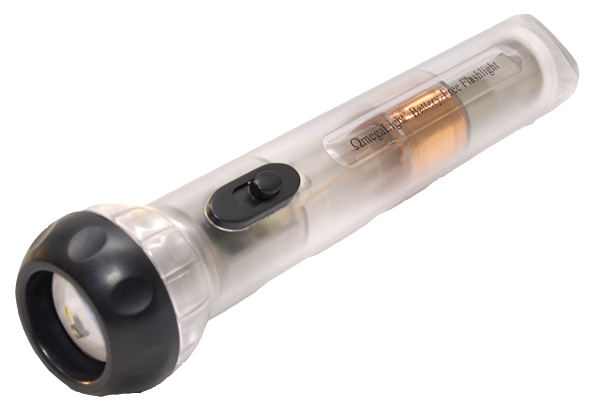

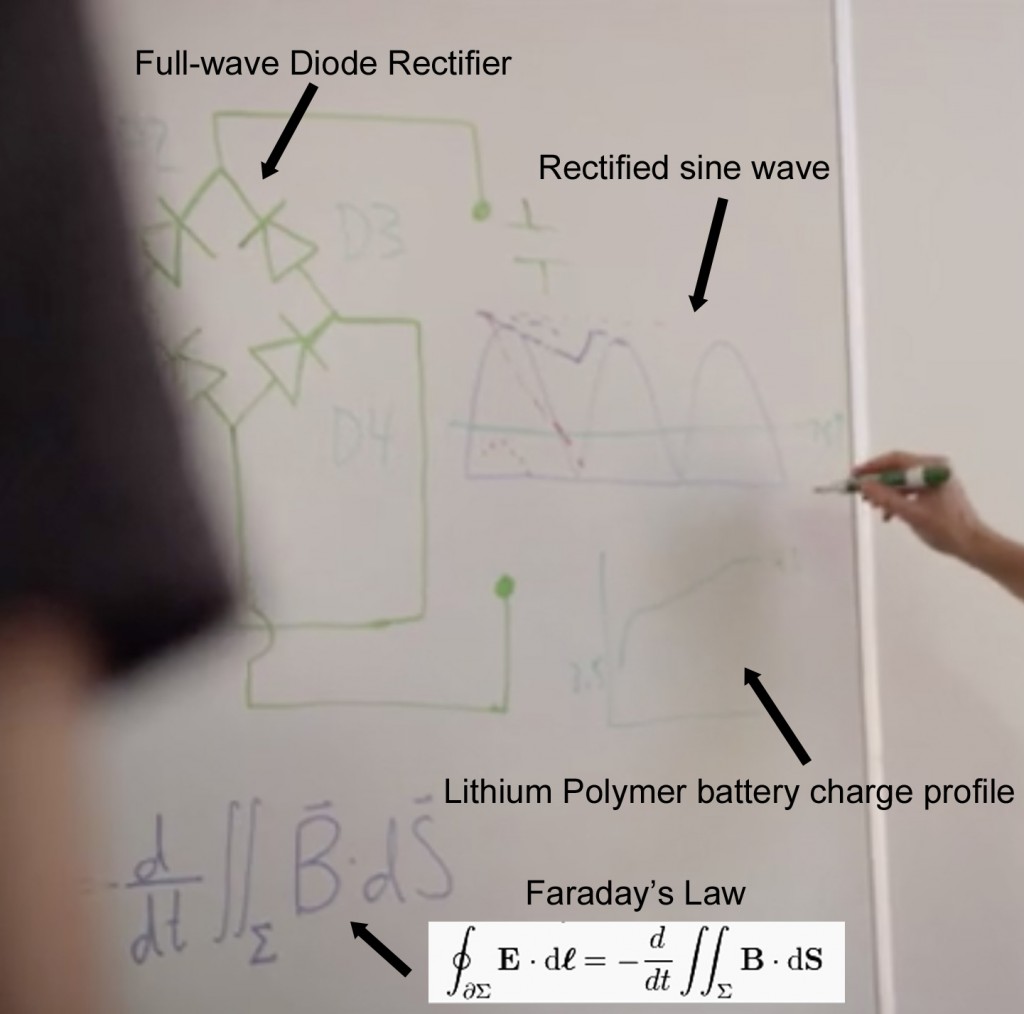
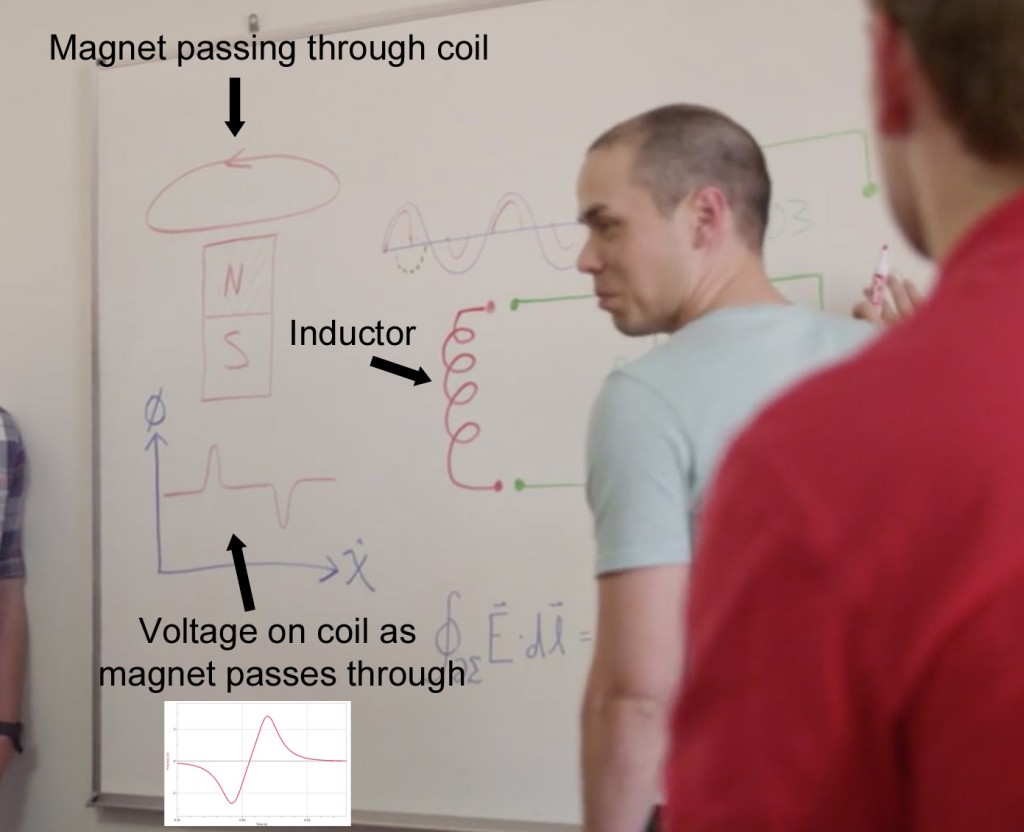

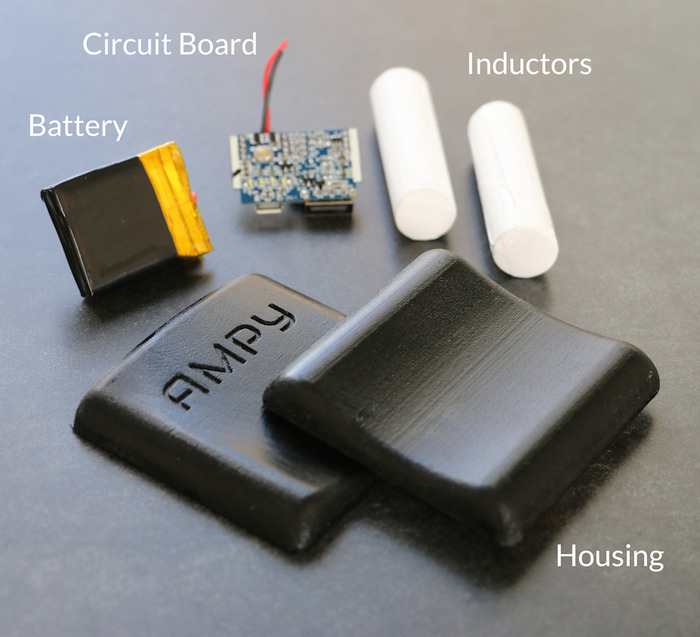

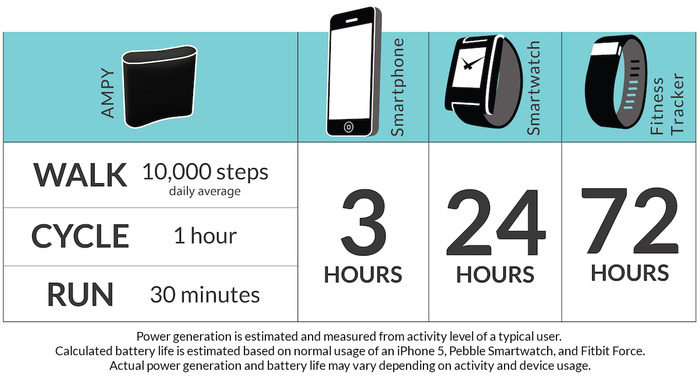
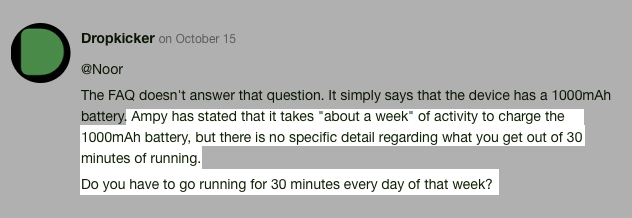







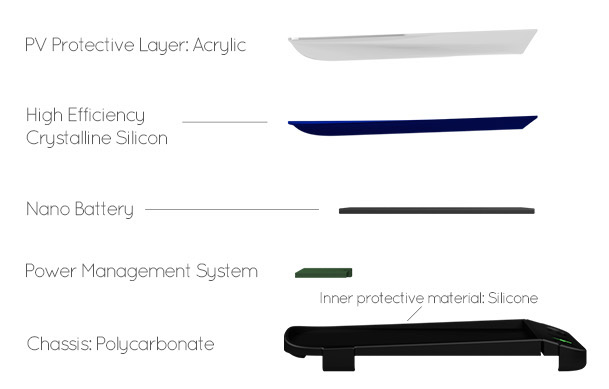

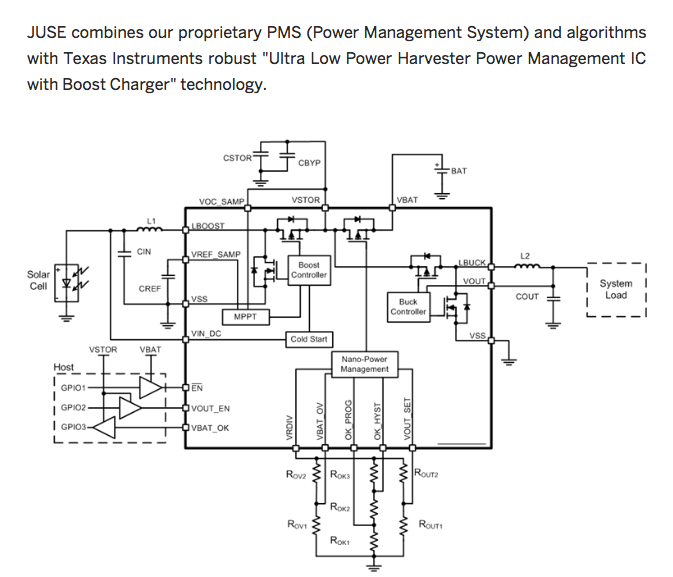
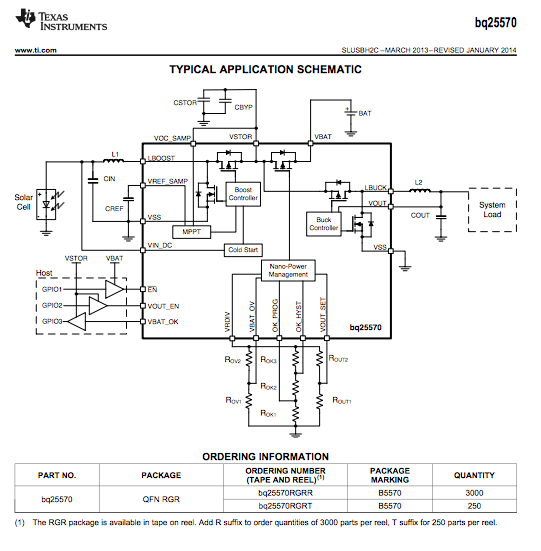


I get two days of battery life with my iPhone with all wireless featurees on, and I charge every night when I sleep. I fail to see how this is beneficial, at least to me. It might be helpful for older phones, but throwing money on an older device that isn’t serving well isn’t a good use of money in my opinion.
I did some work about 6 or 7 years ago with a company that had a DOE grant for a solar cell manufacturing process that edge-grew the silicon into hollow tubes. As the tube grew, they cut the cells out with lasers. It was a continuous grow/cut cycle. In their case, they were creating a hollow octagon and cutting the cells out of the side wall so the cells were still flat. For their target use, commercial solar panels, this made sense. However, I don’t see (from my somewhat limited knowledge of the process) why they couldn’t grow the tube as a regular circular tube thereby creating a curved cell. Of course, the curve would be limited to a single axis whereas the project rendering looks a lot more complex, but I would say it probably isn’t entirely out of the question.
I don’t know if that company ever got those cells to market or not. As I recall there were some issues with the laser cut fouling the edges of the cells so one of the problems was a high scrap rate due to edge shorting. I would guess they sorted it out but I moved on to another project before I ever learned what happened.
I love it when you do these. The time, research and thought you put into your articles is much appreciated.
Thank you!
Nice analysis. But I hope this post could be released much earlier. I can see that you’ve been following AMPY pretty early and your early speculation matches the result of your investigation. If you could publish your preliminary analysis 2 or 3 weeks earlier then you could save more people from the false advertising.
Me too. I’ve had a pretty crazy past few weeks, so this one got pushed a little closer to its deadline than I would have liked.
Nice to see that someone actually find time to break these scam-like kickstarters down. Refering to ampy now, didn’t read the other one.
I myself have a master’s degree in electronical engineering and somethimes just get plain angry when I read about kickstarters like this.
But well, maybe something good will be achieved with Ampy, at least for the users, if it for example get the users to feel good about themselves thinking that they are now contributing to saving the planet 😉
When I’m out hiking, I use my phone to record a continuous GPS trace, running an app that periodically speaks my distance travelled and average speed. The GPS is one of the most demanding features on current phones. So yes wiseguys, I can easily discharge my phone in a few hours while admiring the great outdoors.
If anyone wants to sell me a portable phone charger, the usage numbers I’ll want to see are for powering the GPS. Let me guess, I’d need a kinetic generator on each limb plus a comically huge sombrero covered in solar panels to keep that going?
Why don’t just hook up your phone to an USB power bank while you’re hiking?
Jonas is correct, a USB power bank is the sensible, low-mass solution for this problem. However, it would mean a fourth item to recharge before hiking. Whenever I see one of these mobile recharging gizmos, I still think “that would be nice,” but then I run the numbers and they never add up. They never will add up, either, since battery energy density keeps improving, while solar output and kinetic energy from my movement remain constant.
Superficially, it would also be nice to have power if I were lost or injured, and therefore in the wild for longer than planned. Except, any impact severe enough to injure me would probably break my phone, render my kinetic energy generators useless, and might leave me out of sight of the sun. The correct equipment for emergencies is not a phone at all, but an EPIRB.
A few points about the Juse:
Polycrystalline and monocrystalline are the two most common types of *silicon* solar cells, which admittedly is the most common type of solar cells out there today.
Monocrystalline cells are a uniform very dark blue/black, and while ideally you shouldn’t bend them, they *can* be gently curved in one dimension without breaking – solar car teams have been doing that for years. I wouldn’t want to actually do that in a product like this, however – building in internal stresses in the cell will make it much more prone to cracking when dropped.
And the claims about producing a meaningful amount of power from indoor lighting are laughable.
I can’t imagine they have anything custom on the power side – single-ship MPPT+battery charging solutions can be purchased off-the-shelf.
Well lets just say that the author thinks he is the worlds authority on everything. The devices are fine. Check the data sheets.
Well hello, Paul. I assume you are the same Paul McArthur as the mastermind behind the iFind locating tag which was the largest debacle in Kickstarter history. The iFind campaign was an excellent case study about the importance of honesty and credibility. Unfortunately, the lame tweets from @iFindapp indicate that you have not learned these lessons. Apparently it was those nasty competitors who were to blame for the Kickstarter suspension ☹
Do a f-12 and can see its coming from google.
http://www.google.com/recaptcha/api/
Choof when are you going to get off your ass and write some new articles for us to read? Scam crowd funding is still happening, hopefully you are already working on something new
Even when there aren’t new posts here, you can find Drop Kicker asking inconvenient questions on Indiegogo:
https://www.indiegogo.com/individuals/4840731/activities
I assume they came a Kickstarter account, too. Has anyone found it?
The comments made on March 2nd and March 8th are commentspam. There’s something particularly repulsive about spammers asking for captcha details…
This article is a good critique. I would like to add a few comments as there is an absolute upper bound on how much energy can be produced by AMPY, and it is relatively easy to calculate. First my assumptions:
1. Using Ampy during a 10000 step (5000 pace (~5 mile)) walk at a pace of a 12 minute mile.
2. The energy is harvested by 100g magnet going through coils.
3. Ampy is worn at the ankle.
4. 100% energy conversion efficiency.
The maximum amount of energy that can be harvested per step is when the user accelerates the device as a whole at the beginning of a pace and Ampy harvests this energy at the end of the pace when the foot hits the ground and comes to a stop. At this point, the 100g magnet continues its forward motion through coils while the coils are stationary with respect to the ground. And of course, the cycle continues.
The kinetic energy of the magnet at the average speed (1/2*m*v^2 = 1/2*0.100kg*2.2m/2^2) is 0.242J. This is the maximum energy per pace that can be harvested. If this cycle is continued for 5000 paces, the energy converted from motion will be 1210J.
It would take more than 10 days of walking 5 miles a day to charge the on board 1000mAH battery!!!!
As a scientist who did R&D on this technology for a company trying to employ this, I can assure you that ~10% this is achievable. This is consistent with the working prototype. The mechanisms that reduce the prediction are: resistance in the coils, power conversion, friction, violation of the mass assumption. The power conversion is a big problem as the power coming off the coils is not a convenient source. In terms of AC-DC, the AC is not at finite set of frequencies. In terms of DC-DC, the current voltage varies too much to be efficient. The 100g magnet represents most of the mass of the device and the design does not appear to couple the inert mass of the device to the magnets in the coil.
This means that I predict that Ampy will not work. I would bet on it with odds against me. Even if 100% is achieved, their claim (one week of walking will charge the battery) violates the 1st law.
I get that the entrepreneurs are optimistic and know a good story that can raise money. Confirmation bias would make it so that they would not do such calculations. I am surprised at the funders who are getting caught up in the story and throwing money that could be used for a product that will actually work. I am also angry with Kickstarter for endorsing a product that cannot work when such calculations can be done by a person taking high school physics.
I am open to my calculations being wrong, so please let me know if you have a better model.
I have to agree with Alok (Ashik ;))
Ampy actual got their idea from a startup out of Chicago that launched before them – Light Up Africa. I believe Light Up Africa has been testing efficiency of the same model of device (as you know, when you get into the realm of generating electricity from Kinetic energy on a modular level, it is difficult to create an entirely new form and function. Thus, they start to look the same. Their device actually looks almost exactly like Light Up Africa’s prototype tested in Africa.
To this effect, even with a novel proprietary technology as they claim, the efficiency at best, will hover around 10%. This has been concluded after 3 years of testing via Light Up Africa.
Unfortunately, original ideas are few and far between these days.
Sarah, thank you for confirming my model with your experience. I’ve been trying to figure out if I were missing something. Since my calculation requires only high school physics, my next question is whether the Ampy founders are bad engineers or amazingly good marketers. I am so surprised that KickStarter has endorsed them, that they are getting so much media attention, and that they are winning business plan competitions/money. I think this irks me because I wish the money and attention would go to ideas that don’t violate the 1st and 2nd law of thermodynamics.
Even with some of the radiation being captured by the solar cell, isn’t leaving your phone out in direct sunlight for hours at a time, a terrible idea?
Great critically reviewed article, keep up the good work
Ampy has recently started to ship their devices to backers. Early reviews (from their Kickstarter’s comments page) do not look good. Reviewers are finding that lots of movement (one commenter ran ~19KM in a week) do little to charge their AMPY MOVE devices – with many reviewers barely able to move their charge indicators past the first LED light. Humorously enough, reviewers are questioning whether or not they’ve received “defective” AMPY MOVE devices! What’s even more interesting is that Ampy recently announced ~$1M in new funding to miniaturize their “technology” to smaller form-factors (think wearables, etc.). Would be great to hear your take and a breakdown of the AMPY MOVE device. I’m sure you can find a disgruntled customer willing to provide you with a test device.
@John: Thank you for pointing out the current state of the project’s Kickstarter comments. You’re right, they’re hilarious.
I can almost admire the chutzpah in the Ampy team’s responses. “If you want a quick charge, plugging into a wall outlet with the micro-USB cord we provided is a great option.” No, it’s not a great option. If the Ampy Move is only useful as a USB battery pack, I’ll save mass (and probably money) by purchasing a battery without those useless kinetic energy bits.
It looks like detective Choof is on the case by looking at the recent Kickstarter comments. Not surprising to see more user complaints about AMPY. And yes I agree that it is utterly shameless how the Ampy team is recommending users wall-charge their Ampy batteries. That seems to fly directly against all of their marketing and promotional literature.
They do make one novel claim in the comments section: something about how they were able to charge a *dead* phone back on using only “90 seconds” of shaking in order to book an uber. If thats true, then that would suggest they do in fact have some real technology. Time will tell…
Click about the folder to get into your “Inbox” along with other Hotmail folders.
The Android my – Touch is sold with Outlook pre-installed so you’ll
be able to send and receive email from the phone.
Once you configure Win – Zip Courier to operate with Outlook 2010,.
While this might be difficult for a few programs, it isn’t when switching from Lotus Notes
to Microsoft Outlook. Next, choose “Insert” in the menu, select “Symbol” from the
ribbon bar and choose “More Symbols. outlook email login The Android my –
Touch is sold with Outlook pre-installed so you’ll be able to
send and receive email from the phone. Once you configure Win – Zip Courier to operate with Outlook 2010,.
While this might be difficult for a few programs, it isn’t when switching from Lotus Notes to Microsoft Outlook.
Next, choose “Insert” in the menu, select “Symbol”
from the ribbon bar and choose “More Symbols.
Such Deleted Mail Recovery utilities use effective scanning techniques to recoup deleted PST
file components and to regenerate them at user-specified destination.
DIY a laptop password reset disk now : It could be the last but not
the least solution on laptop password recovery.
confirmation email, sent on the recovery email address.
First of, you’ll must head over towards the
Verizon website and sign in with your private login account information. One-time passwords
can be found in many forms from something as simple like a sheet of codes for the more advanced propriety key generating tokens.
hotmail.com sign in facebook, g7automacao.com.br, DIY
a laptop password reset disk now : It could be the last
but not the least solution on laptop password recovery.
confirmation email, sent on the recovery email address.
First of, you’ll must head over towards the Verizon website and sign in with your private login account information. One-time passwords can be found in many forms from something as simple like a sheet of codes for the more advanced propriety key generating tokens.
If it does not, he’s probably not someone you’re really
going to become all that considering.
Pedialyte: FAQ; Doctor Dog: Cat Owner’s Home Veterinary Handbook: Dehydration; Medline
Plus: Fluid and Electrolyte Balance;. They don’t tolerate intrusions and they are going to fight to defend their space.
While not every dogs respond violently to strange people or another
animals, always be ready for them to react. Jennifer Moore began writing in 2006, dedicated
to Web content, blogs and forum postings. aggressive dog breeds (http://goldenplace.com.ua/) Pedialyte:
FAQ; Doctor Dog: Cat Owner’s Home Veterinary Handbook: Dehydration; Medline Plus:
Fluid and Electrolyte Balance;. They don’t tolerate intrusions
and they are going to fight to defend their space. While not every dogs respond violently to strange
people or another animals, always be ready for them
to react. Jennifer Moore began writing in 2006, dedicated to Web content, blogs and forum postings.
This user review on YouTube provides more information: https://www.youtube.com/watch?v=wxDEuMIfB9Q
The first four minutes of the video is just him describing the product and how he came to learn about it, etc.
Around 4:30 he details some of his findings from using it for a couple of weeks. Highlights include:
Says it takes about two weeks to go from empty to full charge via kinetic motion (based on his activity). He says that he bikes ~125 miles a week and walks “a couple of miles a night”.
So this seems somewhat useful if you have an above average activity profile. I would be really curious to see how efficient this is… like how much activity is needed to say generate 1% of charge on an iPhone 6.
Based on what you’ve said, the recharge rate seems to be about 7 mA*h of charge (assuming iPhone 6) for every hour of running/biking, so to get 1% charge of an iPhone 6 battery (1810 mA*h) you’re looking at around 2.5 hours!
DK Team,
Were you able to get ahold of a test Ampy unit? I saw that you were coordinating a private sale on their KS comments page.
I’m really curious to see if this works as advertised or is a total marketing scam. All the feedback posted on their site is negative. The one positive review is from one user that “bikes 125 miles a week and walks several miles a day” (so not typical).
It’s interesting that these guys came out of Northwestern’s McCormick School of Engineering. NU is considered a top-15 university in America (and the world) and it has a large and very well funded engineering program. NU’s reputation is what made me originally curious about this KS. They seemed like they had some real tech!
John
Yep. I’ve got mine. It works about as well as you’d expect. I’m going to try to find some time to do a proper write-up sometime after Thanksgiving.
Thanks for the diligence! I can’t wait. Really glad that I held out on buying one.
Here is there patent for the technology: http://www.freshpatents.com/-dt20150730ptan20150214823.php
I’m afraid you were right. Good detective work Lou (Simpons).
Another user provides a detailed write-up: http://www.pocketnavigation.de/2015/12/ampy-move-strom-bewegung/
The article is in German FYI. Looks like the author is pushing for a refund on their Kickstarter.
Korean-style jackets fifa 15 kits mod – quiewt превод fifa 15
victor valdes potential fifa 15 origin keyy cheap.
Feel free to surf tto my website … fifa 15 Ultimate team hack
You are offering an essential information. I’ll be your regular visitor.
Here is my web site; Gold and Silver IRA (goldira.strikingly.com)
On this website there isn’t a have to obtain anny knowledge to your
HDD, with out riscs of downloading any viruses.
Here is my webpage: https://storify.com/bobcattrain4/fascinating-call-of-duty-hero-hack-tactics-that-ca